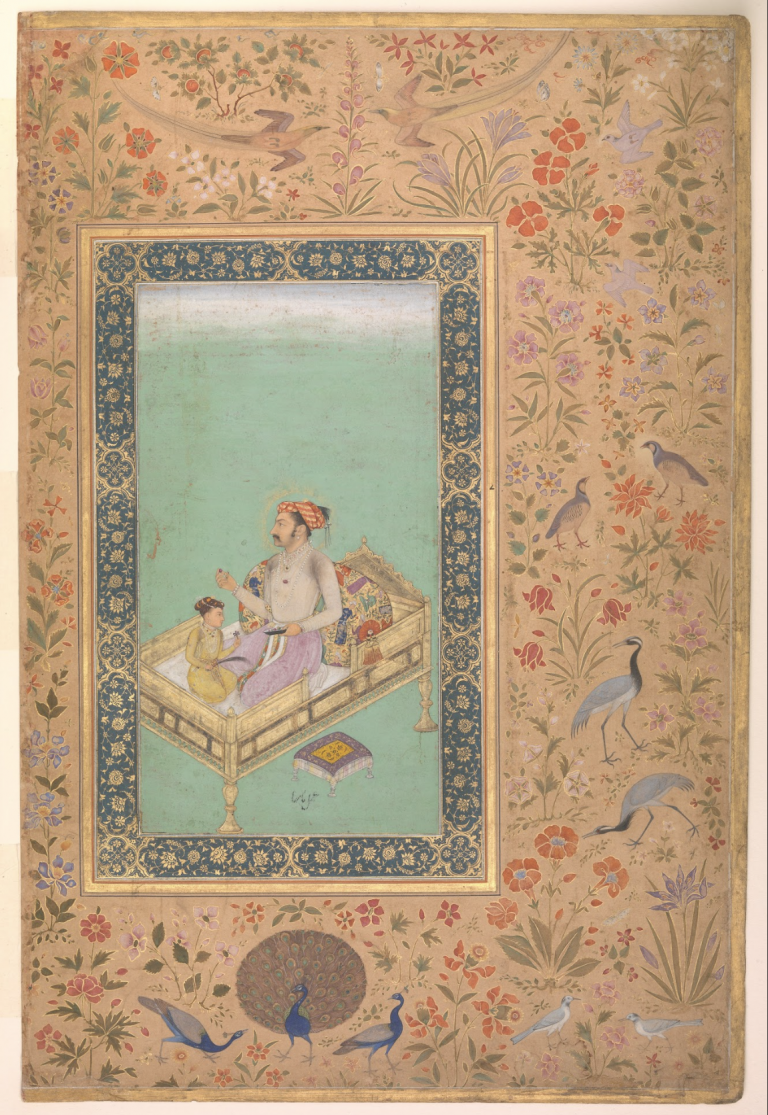
Gopikrishna’s paintings are examples of intricate technique and carefully formed compositions. Specific characters with specific stories come together in his works to form complex narratives and allegories that articulate wisdom and humour. I came upon his work at Art Musings in Mumbai, where three new series of works, both paintings and drawings, made up his solo exhibition. Gopikrishna’s paintings harness concepts and ideas from Hindu philosophy and daily life in Kerala, transforming them so they are no longer linear in their expression, but circular and multivalent. His images struck me as uniformly disturbing and cleverly constructed, with a heavy dollop of sexual deviancy resounding in the works. And yet I couldn’t help but wonder, where are all the women?
In this realm of painted desire and phallic imagery, female identity is astoundingly absent in its most recognized form, namely that of the sexualized female body. Edward Said suggests that, “women are usually the creatures of a male power fantasy. They express unlimited sensuality, they are more or less stupid, and above all they are willing.”1 It seems to me that the female body, as an object of formalized otherness, is missing, and yet otherness – which is often characterized by femininity – is central to Gopikrishna’s overall project. He creates a space for the other in his work by including central protagonists in the form of animals, anti-heroes, and a selection of characters with homoerotic proclivities, thereby dissolving any sign of a complete masculine subject.
In the painting Prisoners, an inmate scribbles on the wall of his cell, glancing over his shoulder at the animals and fearsome lizard-like monster approaching him. In the corner an egg hatches and a gander is born. In the background, another prisoner leans as far back as his chains will allow to peek at the world outside. The roof of the prison is tantalizingly missing, offering a view of the skies while making the surrounding boundaries more obviously present.
The Friendly Lizard, is a comic carnival of phallic imagery, where Gopikrishna creates a space to reverse the natural order. In this case, the beasts are not tied up and controlled, but unleashed as ringleaders in deviant games. A lizard rides the back of a man, whose penis is tied to his tail. The lizard’s foot dangles past the man’s abdomen, coming perilously close to man passing in an orange loincloth. This lizard’s foot appears almost like a second appendage on the man he has mounted. Another man, wearing a shirt that reads “POWER,” stands with a stick in his hands, ordering the pair to continue their tricks for onlookers. Another lizard leads his human, also attached from the groin. A three-headed lizard awaits his turn to be part of the spectacle.
In Hungry Soldiers, Gopikrishna connects the absurdities of war with military hostility to homoerotic tendencies. Soldiers greedily swallow a bunch of bananas, even though they have been shot and are wounded. One soldier eats only the inside of the fruit, leaving the emptied peels on the floor while he looks over his shoulder and levels his gaze on the viewer. He invites the audience to take part in the frenzy. A large black cat mimics his gaze. Dressed in uniform, he holds a dead rat in his mouth. The officer with a thick twirling mustache seems to have grown impatient of waiting to peel each fruit and takes to biting them off the plant. He leaves little stubs in his wake. A third guard runs in fright as an inflamed plane comes crashing down in the distance.
Giants for Sale is one of Gopikrishna’s more complex compositions. Using his hand, the nobleman in the painting explains the concept of triguna. The parakeets with the crowns and garland fly above the earth and represent sattvic or heavenly. The giants, grotesque and tightly bound, are the tamasic. The question of otherness is central to this image. Is this system a rule of nature or the rules of men? The characterization of the simple wide-eyes giants is particularly telling. While they are superior in brute strength, their inability to outwit their diminutive captors means that they remain in servitude. The first detail of note is the difference in skin colour. The artist chose to paint the giants skin with tones of olive and brown. The freemen all share the same light skin. But perhaps the most telling detail is in the articulation of the eyes. The giant’s eyes have the wide and open appearance similar to Hindu deities. The lighter skinned men, European in his dress and fashion, have smaller elongated eyes, which alertly look in a particular direction. Have the European settlers somehow ensnared the ancient native deities and ended their dominion?
Gopikrishna’s aim in this case is not to paint one figure as a villain and the other as a victim. He rather wants to complicate the narrative by offering up certain “truths” which is already an unclear point of reference for understanding this relationship. Truth, in this case, is something that needs to be qualified, existing as it does in a realm of subjective fantasy. Furthermore, the characters all seem bound in their states of absurdity, as “human societies, at least the more advances cultures, have rarely offered the individual anything but imperialism, racism, and ethnocentrism for dealing with ‘other’ cultures.”2
Carnival of Rising Emotions, Gopikrishna, 8 Sep, 2010 – 23 Oct, 2010, Art Musings, Mumbai.
Image Courtesy: Art Musings
Endnotes:
- Edward Said, Orientalism, (New York: Vintage Books, 1978) p. 207.
- Ibid, p. 204.













